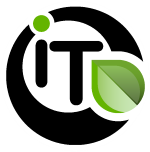We have received many good questions during the in-depth consultation with experts and the online consultation. Here is a collation of the frequently asked questions and our responses.
About the Digital Literacy Global Framework
Yes, some competences overlap and are interconnected. (For cross-references between competences, please see Annex II of Ferrari’s (2013) DIGCOMP: A Framework for Developing and Understanding Digital Competence in Europe, or section 4.2 of Vuorikari, Punie, Carretero and Van den Brande’s (2016) DigComp 2.0: The Digital Competence Framework for Citizens Update Phase 1: The Conceptual Reference Model) The goal of this project is to propose a global competence framework of digital literacy skills that is sensitive to different developmental contexts. The categorization prioritizes the recognizability and ease of use of the framework by different stakeholders. A consequence of this context-sensitivity is making visible competence areas and competences that might otherwise be missed by stakeholders, particularly those in developing contexts, if embedded within other competence areas and competences. Thus, it was seen necessary to have additional, standalone competence areas 0 and 6, and competence 5.5 computational thinking.
No, the numbering of the competence areas and the number sequencing of competences within a competence area do not indicate a progression. They are just used to provide a convenient way for referencing.
The DLGF is intended to serve as a framework of reference for different stakeholders, and the specific use differs according to the purpose. Some examples include:
- To create educational programs for a target population, for example to meet the needs of developing digital literacy programs for the implementation of a national digital strategy.
- For further research and development in order to improve the digital literacy of a target population/sector
- As a reference tool to compare against existing digital literacy frameworks/curricula. You can read about the mapping of selected digital literacy frameworks onto the extended Digcomp framework in the draft DLGF report. You can read about a specific example of a curriculum being mapped to Digcomp here.
- As a reference tool to develop a digital literacy implementation plan. You can read about specific implementation examples of a digital literacy framework in the Digcomp Gallery of Implementation within European Union member states.
Digital literacy serves as the competence needed for citizens to exercise their rights and responsibilities in the digital world, which is not confined to geopolitical boundaries. As Ferrari (2013) states, “The competences and competence areas that are here defined can be seen as components of e-citizenship, thereby addressing the issue of digital divide. It is in fact recognized that participation in the digital domain is no longer a question of "have" or "have not", but rather an issue of competence” (p. 7).
Please refer to the DLGF competence descriptors and glossary on the project website.
Broad or generic language in the description of competence areas and competences is appropriate for the global framework to ensure that it is relevant for diverse contexts and remain so over time. Stakeholders can make adaptations to generate their own DL frameworks as appropriate for their own contexts by using more specific language.
About Pathway Mapping Methodology
No, the use case examples on the website come from large and small states. The use case examples on the website are illustrative as proof of concept that any state can develop use cases and adopt the methodology.
No, the example pathways are illustrations of the methodology. There are many different contexts and use case scenarios, and the project will not attempt to develop a collection. The methodology is to be adopted by relevant stakeholders who will develop their own pathway for their respective sectors and job-related areas.
Anyone can select their own use cases as considered relevant and use this method to serve the purpose for which they wish to conduct the mapping. On the other hand, we can see that the most likely adopters of this methodology are those involved in the provision of DL training and those in positions serving policy makers.

